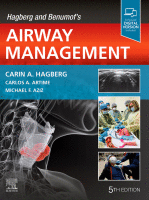Physical Address
304 North Cardinal St.
Dorchester Center, MA 02124

Key Points Intensive care unit (ICU) patients’ airways are extremely demanding; airway-related mortality and severe morbidity may be orders of magnitude higher than in general OR practice. Difficult airway (DI) is at least twice as common. Airway intervention must be…

KEY POINTS Specific training for non-operating room anesthesia (NORA) should be incorporated into anesthesia residency programs. Monitoring for both oxygenation and ventilation is required during sedation, including the use of capnography. Intubation of the patient with an anticipated difficult airway…

Key Points Regional anesthesia can provide an alternative to general anesthesia for certain surgical procedures; these includes surgeries to the thoracic and abdominal cavities and wall, and surgery to the extremities. The surgeries should be of limited duration (i.e., not…

Key Points A high body mass index (BMI) is a weak but statistically significant predictor of difficult intubation (DI) and difficult mask ventilation (DMV). Body fat distribution, rather than the BMI value, may be a better predictor of difficult laryngoscopy.…

Key Points In addition to airway assessment, neurologic examination and communication with the surgeon is invaluable before the induction of anesthesia for neurosurgical procedures. Patients with an unstable cervical spine may be unable to cooperate with an awake flexible scope…

Key Points Airway problems in head and neck (H&N) patients are common, and so are the airway failures. The anesthesia provider must develop and maintain excellent dexterity with a wide range of airway management devices and techniques. The preoperative endoscopic…

Key Points Anesthesia is a leading cause of maternal mortality and ranks seventh in the United States and eleventh in the United Kingdom. Airway-related complications during general anesthesia (GA) for cesarean delivery (CD) feature as a predominant cause of anesthesia-related…

Key Points The first attempt at the pediatric airway should be the best attempt and includes proper preparation of equipment and positioning. The pediatric airway anatomy is different in children, whose larynx is located higher in the neck with a…

Key Points The priorities and approaches to airway management in the burn patient are different in the acute, subacute, and chronic phases of burn injury. Airway edema results from thermal and inhalation injury, and rapidly increases with fluid resuscitation. Induction…

Key Points Although many trauma patients may initially appear to maintain and protect their airway, they remain at risk of progressive airway obstruction or multisystem traumatic comorbidities necessitating frequent reevaluation. Intubating a trauma patient should be part of an overall…